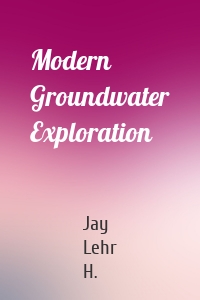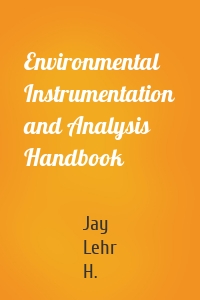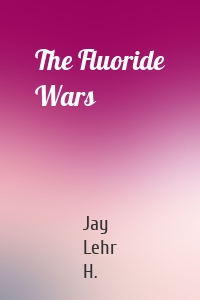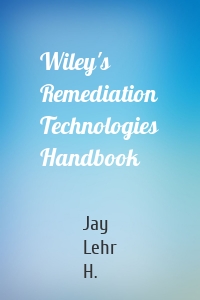Jay Lehr H.
4 кн.
Modern Groundwater Exploration
New exploration tools and techniques for a breakthrough paradigm of regional groundwater occurrence Fresh water is undoubtedly our most precious resource aside from the air we breathe, and the only commodity whose cost has steadily risen over time. At the same time, our understanding of the origins, pathways, and recharge mechanisms of the earth's most valuable «economic» mineral-groundwater-remains in the nineteenth century. It is ironic that this scientific anachronism is contributing to a...
| Автор | Jay Lehr H. |
Environmental Instrumentation and A...
A comprehensive resource for information about different technologies and methods to measure and analyze contamination of air, water, and soil. * Serves as a technical reference in the field of environmental science and engineering * Includes information on instrumentation used for measurement and control of effluents and emissions from industrial facilities that can directly influence the environment * Focuses on applications, making it a practical reference tool
| Автор | Jay Lehr H. |
The Fluoride Wars
A lively account of fluoridation and its discontents Since its first implementation in Grand Rapids, Michigan, in 1945, public drinking water fluoridation and its attendant conflicts, controversies, and conspiracy theories serve as an object lesson in American science, public health, and policymaking. In addition to the arguments on the issue still raging today, the tale of fluoridation and its discontents also resonates with such present concerns as genetically modified foods, global warming...
| Автор | Jay Lehr H. |
Wiley's Remediation Technologies Ha...
Wiley's Remediation Technologies Handbook: Major Contaminant Chemicals and Chemical Groups, extracted from the Enviroglobe database, consists of 368 chemicals and chemical groups. This book lists in alphabetical order these chemical and chemical groups along with the numerous technologies, many of which are patented, or trademarked techniques, to remediate them. A short description of each of these technologies is provided along with appropriate references. Wiley's Remediation Technologies...
| Автор | Jay Lehr H. |





